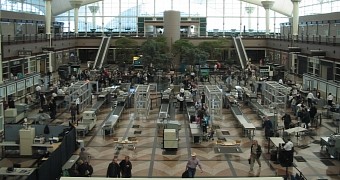Screening agents from the Transportation Security Administration (TSA) failed 67 out of 70 times in tests involving undercover agents from the Department of Homeland Security, at dozens of the busiest airports in the US.
The evaluation was carried out covertly, with so-called Red Team agents pretending to be passengers and trying to smuggle mock weapons and explosives past the checkpoint.
Undercover agent passes screening despite setting off alarm
The failure ratio is mind blowing, as TSA screeners did not detect the hidden devices during the routine pat-down in 95% of the cases.
In one instance, a Red Team agent with a concealed fake explosive attached to his back triggered the alarm of a magnetometer and, as part of the routine, was subjected to corporal search.
However, the TSA screener did not find the hidden item and the undercover agent was able to reach the terminal area carrying a potentially harmful object.
It is unclear when the tests were conducted, but officials that received the results told ABC News that it was an event that completed recently.
Jeh Johnson, the US Homeland Security secretary, said that the responsibilities of the acting TSA administrator Melvin Carraway would pass to deputy director Mark Hatfield until a replacement is found.
Nominated for this position is coast guard Vice Admiral Pete Neffenger, awaiting confirmation from the US Senate.
Constant evolution of screening techniques is a must
Although the results of the tests are concerning, they may have been aimed specifically at uncovering weaknesses during the passenger screening process; this would mean that in a real-life scenario, a terrorist would have deep knowledge of the TSA verification procedures and rely on specific methods and behavior to bypass them.
Nevertheless, even the slightest chance to bypass checkpoints is a serious risk in aviation security and needs to be addressed properly as terrorists are constantly learning and adapting to new situations.
Being at least one step ahead such threats requires continuous evolution of techniques for detecting items that could jeopardize the safety of passengers.
Johnson says that more random covert tests like this one will happen in the future.

 14 DAY TRIAL //
14 DAY TRIAL //